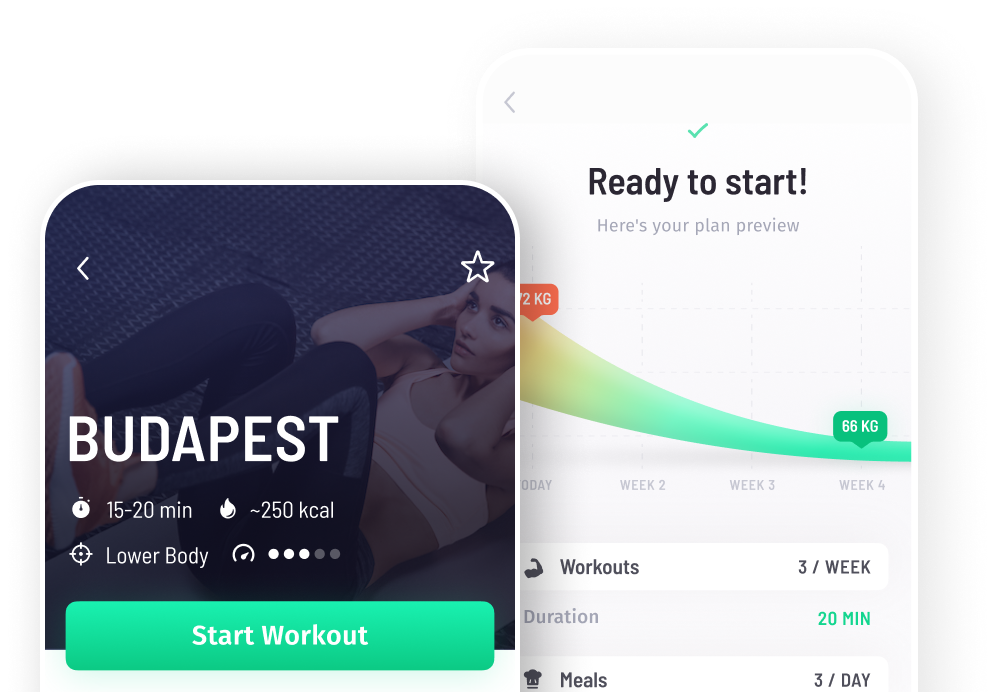If you are interested in interval training, you probably have heard someone talking about Tabata training or seen an instructor promoting it and thought to yourself, ‘what is Tabata training?’
Let’s go on to learn what Tabata training is, what it consists of, and the benefits of this kind of workout.
What is Tabata Training?
Tabata training is a popular form of High Intensity Interval Training (HIIT), developed by Japanese scientist Dr. Izumi Tabata, a professor at the Faculty of Sports and Health Science at Ritsumeikan University in Japan, and his colleagues.
In comparing moderate intensity training and high intensity interval training, Dr. Izumi Tabata and his colleagues discovered that athletes who trained at high-intensity levels saw increases in both aerobic and anaerobic capacities, rather than just an increase in anaerobic capacity via moderate-intensity training.
The intention of this training method is to have an effective workout by getting your heart rate up quickly and training all of your energy systems within a short period of time.
Compared to other forms of HIIT, Tabata training is performed in shorter time increments and pushes your heart rate to its maximum. You should feel absolutely exhausted after Tabata training, and if you don’t, you didn’t push yourself hard enough!
Overall, Tabata training is more of a formula than a specific workout.
So, what does Tabata interval training consist of?
Tabata training is broken down into 8 intervals done at ultra-high-intensity. On an exertion scale from Levels 1-10, Tabata training is done at a level 9-10.
Each interval consists of exercises 20-seconds-on, 10-seconds off. Don’t cheat the formula (unless your body tells you it needs some more rest)! The intervals are short, but very effective when followed correctly.
The training is intended to consist of one movement that you repeat for a total of 4 minutes.
For your movement, you have a wide variety to choose from. Here are some examples:
- If you want to get outside, you can do sprints.
- If you are at home or at the gym, you can do burpees, squat jumps, or push-ups.
- If you are the pool or sea, you can do freestyle intervals.
However, you can also follow workouts that have a proper 4-minute circuit with moves including, but not limited to: mountain climbers, burpees, bodyweight squats, suicides drills and high-knees.
How many times a week should you do Tabata training
When starting out with Tabata training, start with 1 time per week.
Then, even once your body gets used to this training style, you should only do Tabata training no more than 1-2 times per week.
Since it is such a high-intensity workout, you do not want to overdo it as this could lead to injury or excessive stress your body.
Recovery is a crucial part of training, so mix in other training styles during your week for the best results.
Does Tabata training work?
If you truly make the most of the 4 minutes, Tabata training absolutely works. Even just in the first 20 seconds, you will feel the workout pack a punch.
It is vital that you go as at high of an intensity that you possibly can.
If you tack a Tabata training session onto a cardio workout, etc., you can boost your workouts and have a lot more fun as you mix in different exercises.
Benefits of Tabata training
Burn calories
Tabata training is an effective HIIT workout that burns calories, all in a matter of four minutes.
Don’t get bored with your workouts
It is easy to get bored with your workouts if you are doing the same training style over an over, and you can avoid all that if you mix in a Tabata interval training once or twice a week and switch up the movement you do.
Get a training session anywhere, anytime
Tabata training can be done anywhere, anytime. If you are travelling for a weekend and know you won’t be able to make it to the gym, schedule your Tabata training to fall on that weekend and trust you’ll get in an effective workout.
No equipment required
The appeal of ‘no equipment requirement’ is strong. You don’t have to buy anything for Tabata training sessions, nor do you have to make sure your workout space has specific equipment.
Avoid the stress of ‘not having the time’
Since Tabata training sessions take 4 minutes, you don’t have to worry about carving out an hour of your time. You can fit in a session before or after work, or squeeze it in during a 15-minute break.
As with any workout regimen, consult with your doctor first to see if Tabata training is the right fit for you. Once approved, it is also recommended to work with a trainer to ensure you are using the correct technique and proper form. After all, you want to make those 4 minutes really count!
Did you enjoy this article? Share it!

